Released in 1963, The Pink Panther is a classic, comedy-crime adventure film that catapulted the late British actor Peter Sellers into stardom and spawned a popular franchise that lasted nearly 40 years; however, in recent times, this fictional fantasy has lent its name to an international criminal nightmare spanning two decades.
After hundreds of heists with losses amounting close to $US1 billion, the elusive gang known as the Pink Panthers continues to terrorise the global jewellery industry. The gang has mounted well-planned and elaborate robberies around the world, most notably in Europe, the Middle East and Asia; however, the gang members didn’t choose their moniker. Rather, it was given by Interpol due to the audacious manner of their crimes.
The Pink Panthers’ legendary trademark is the ability to carry out robberies with carefully planned and precise attacks lasting just minutes. But while the gang’s activities continue to this day, they might finally be running out of time.
Who are the Pink Panthers?
The gang’s members are believed to be ex-soldiers with extensive military and paramilitary backgrounds. They come from Serbia, Montenegro and other former Yugoslavian states – remnants of the Bosnian War who have sought unconventional ways to make use of their hardened skills.
There’s no official information as to the exact number of members but Interpol believes that the criminal network is made up of around 800 core participants with an undetermined number comprising their extended international network.
The secretive Pink Panthers are not like any ordinary criminal syndicate. Rather, they are an elaborate network of thieves strewn across the globe. The gang is likened to a terrorist organisation, maintaining ‘cells’ that can be activated to participate in a planned heist at a moment’s notice.
Although the Pink Panthers often carry firearms during their raids, they claim neither to shoot nor kill people but employ weapons as a shock-and-awe tactic to coerce victims into submission. The gang has also been known to use attractive women in many of their operations, mostly during reconnaissance operations and as lookouts during raids.
In 2013, a documentary film about the notorious gang was produced entitled Smash & Grab: The Story of the Pink Panthers. It featured interviews with several of the alleged leaders of the gang who discussed their history and exposed some of their well-laid plans and robberies.
 |  |
Above: Nebojsa Denic (left) and Milan Jovetic (right) were arrested in connection with the record-breaking 2003 Graff robbery in London.Image credit: Interpol |
The biggest heists in recent history
The Pink Panthers have been credited for some of the most expensive jewellery thefts in the last century, including the series of attacks on the Graff chain of luxury jewellery boutiques. This involved an alarming pattern of robberies which were carried out every two years.
The syndicate made international headlines in May 2003 after two gang members pulled off what was then the largest diamond heist in British history. They struck at New Bond Street’s Graff ‘Jewellery Salon’, carting away jewellery valued at around £23 million ($AU42.74 million).
The suspects, who were smartly dressed when they entered the premises, drew their weapons and began seizing jewels. Staff were caught off-guard, believing at first that the men were celebrities wearing ludicrous disguises to hide their identities while shopping for expensive items.
It was during Interpol’s investigation of this robbery that the name ‘Pink Panthers’ was coined. In the course of conducting searches and making arrests, authorities found a stolen blue-diamond ring worth £500,000 ($AU928,000) hidden in a tub of face cream, a method that was used in the first of the Pink Panther movies!
More than 80 per cent of the Graff jewellery stolen in 2003 has not been recovered and the investigation resulted in the arrest of two suspects, Nebojsa Denic and Milan Jovetic
Two years later, the Graff store on London’s Sloane Street was hit by three Pink Panthers. This time, they stole items valued at £2 million ($AU3.71 million). Again, exactly two years that previous robbery, two gang members arrived at Sloane Street once more, this time in a chauffeur-driven Bentley Continental Flying Spur. At gunpoint, they took items worth £10 million ($AU18.55 million).
Sure enough, two years later again in August 2009, the Graff New Bond Street store was robbed once more of 43 items of jewellery worth a whopping £40 million ($AU74.4 million). The stolen items were later recovered and the two suspects arrested. They denied that they were members of the Pink Panthers but the timing and method of the robbery strongly suggested it was the work of the criminal syndicate.
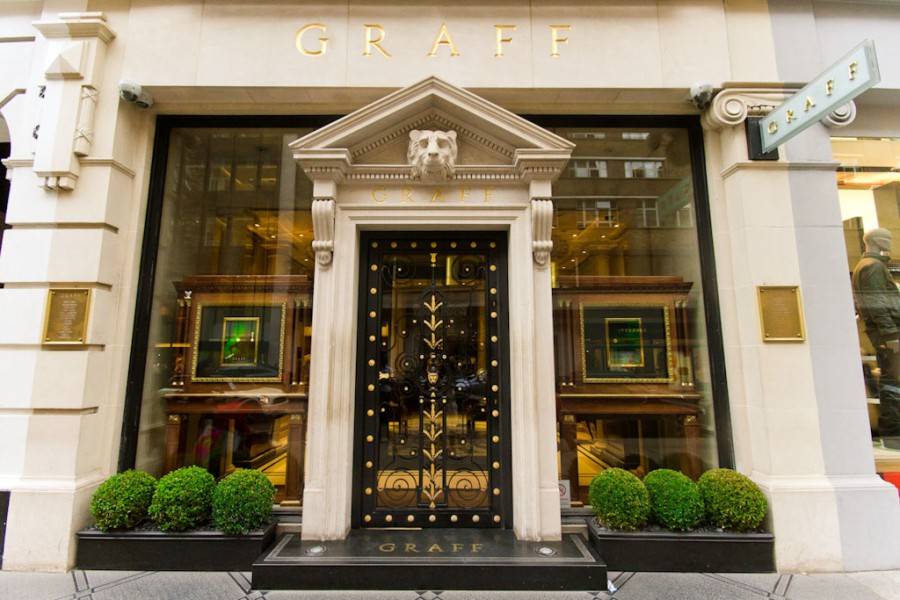 |
Graff on Sloane St. Knightsbridge, London |
Going global
The London Graff stores weren’t the only ones to be targeted by the Pink Panthers. Undaunted by the authorities, thieves struck the Graff store inside the Wafi City mall in Dubai in 2007, using Audi A8 cars to ram their way inside.
The same cars were used to flee the scene with jewellery worth £2.4 million ($AU4.5 million). Thankfully, those items were also recovered and two Serbian gang members arrested.
Indeed, the Panthers perpetrated their trademark robberies all across the globe in the early 2000s, targeting jewellery stores in such diverse locations as Belgium, Croatia, the French Riviera, Copenhangen, Las Vegas, Paris and Vienna.
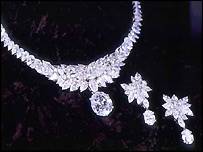 |
Comtesse de Vendôme necklace
Source: BBC News UK |
One of the most daring thefts was snatching the Comtesse de Vendôme from Tokyo’s Le Supre Diamant Couture De Maki boutique where the 125-carat diamond necklace, valued at $US31.6 million, had been on display for 23 years.
Over the years, the Pink Panthers’ tactics have gone beyond armed robbery – they’ve been known to cover public benches near their crime scenes with fresh paint, deterring potential witnesses from sitting there, and have also resorted to using bizarre masks, tourist disguises, cross-dressing and even teargas.
In 2005, an armed gang of seven men dressed as airport workers broke through the tight airport security of Amsterdam’s Schiphol, where they transferred €75 million ($AU122 million) to a waiting plane. It took the authorities 12 years before the Dutch robbers were arrested and two of them were believed to be members of the Pink Panthers.
The Panthers haven’t restricted themselves to jewellery. By 2008, their ambitions had grown. Targeting a museum in Zürich, Switzerland, gang members pulled off the largest art robbery in European history, hauling off a Monet, a Van Gogh, a Cézanne and a Degas with a combined value of more than $AU200 million.
In retreat?
After that, the Pink Panthers disappeared for nearly five years. Perhaps the retreat was due to several members of the gang being caught and charged by police between 2005 and 2009, including two men and a woman who were arrested over the Comtesse de Vendôme theft.
An alleged gang ringleader, Mitar Marjanovic, was captured in Rome in 2012 after accomplices dropped stolen items with his fingerprints on them.
It wasn’t until 2013 when a man wearing a baseball cap and a scarf broke into the Carlton Hotel in Cannes that the Pink Panthers were again connected with a crime. That man made off with $US136 million ($AU197.89 million) in diamonds, gems, and jewellery that were being stored by the Leviev Diamond House.
Immediately after, a second five-year hiatus ensued and the Pink Panthers disappeared from the headlines until just last year when the gang was connected to four high-profile raids.
In January, five Pink Panthers armed with axes and guns forced their way into a jewellery store inside the five-star Paris Ritz, taking with them a smash-and-grab haul valued at €4.5 million ($AU7.3 million).
While escaping, three of the thieves were stuck inside the premises after triggering a security system that automatically locked the doors. Nevertheless, one managed to throw the bag of jewels out the window to an accomplice waiting on a scooter.
In the same month, five men were arrested in Croatia for stealing $AU3.2 million of jewellery owned by a member of the Qatari royal family. The heist took place on the final day of the Christie’s ‘Treasures of the Mughals and the Maharajahs’ exhibition at the Doge’s Palace in Venice, Italy.
Then, in August, thieves stole royal artefacts of the Swedish monarchy, including two crowns and a golden orb dating back to the early 17th Century, from a display case in the Strängnäs Cathedral. The suspects escaped in a speedboat and remain at large.
Finally in November, suspected Pink Panther thieves stole the diamond-encrusted Portland Tiara crafted for Winifred, Duchess of Portland, and worn at the 1902 coronation of King Edward VII of England. Security personnel guarding the Portland Collection, in rural England, missed the robbers by a mere 90 seconds and the whereabouts of the thieves and the tiara remain unknown.
Losing their touch
The gang has been mostly successful in eluding authorities but the number of cases attributed to the gang has declined over the years. Sloppy mistakes and DNA evidence have led to several arrests of fellow Pink Panthers. In 2008, three Pink Panthers from Serbia were found guilty of robberies carried out in Biarritz, Cannes, Courchevel and Saint-Tropez by a court in Chambéry.
The following year, a suspect in the 2007 Ginza heist – a Montenegrin-national named Rifat Hadžiahmetovic – was arrested in Cyprus and extradited to Japan where he was sentenced to 10 years in prison. His accomplice, Radovan Jelušic, was arrested in Italy in 2010 on a separate crime and was extradited to Montenegro.
In 2009, French police in Monte Carlo arrested three members of the gang after they were seen loitering near jewellery shops and a casino. One of the three arrested was Serbian Dragan Mikic, an alleged ringleader of the syndicate who had broken out of jail in 2005 in a daring ladder escape.
Three more members of the gang were caught in Athens, Greece in 2012 while conducting reconnaissance in an upmarket district. Police on patrol were prompted to question two men after noticing they were wearing wigs and carrying firearms and axes. A chase ensued in which a police officer was shot and injured before both men were arrested.
With Interpol hot on their heels and nations across Europe and the Balkans forging extradition treaties, the gang’s safe havens are disappearing. Technology has also played a major role in the arrest of the Pink Panthers, according to Interpol.
The biggest challenge that could spell their downfall is blockchain, which is used to ensure the absolute traceability of each element in the jewellery supply chain.
Artificial intelligence (AI) and advanced biometrics could also make it more difficult – even impossible – for the Panthers to carry out their plans.
While they have succeeded in committing record-breaking heists in the past, the jewellery industry is preparing itself with ever-more complex security measures – and the Pink Panthers might soon find themselves out of time.
THE MOST DARING RAIDS OF THE PINK PANTHERS
2002: A five-person team steals the Millennium necklace – a platinum, black coral and diamond necklace valued at $US1 million – from the Bernard K Passman Gallery jeweller inside the Venetian Casino in Las Vegas. They use a distraction technique to avoid detection by staff. Law enforcement believe the thieves to be part of the Pink Panther network. |
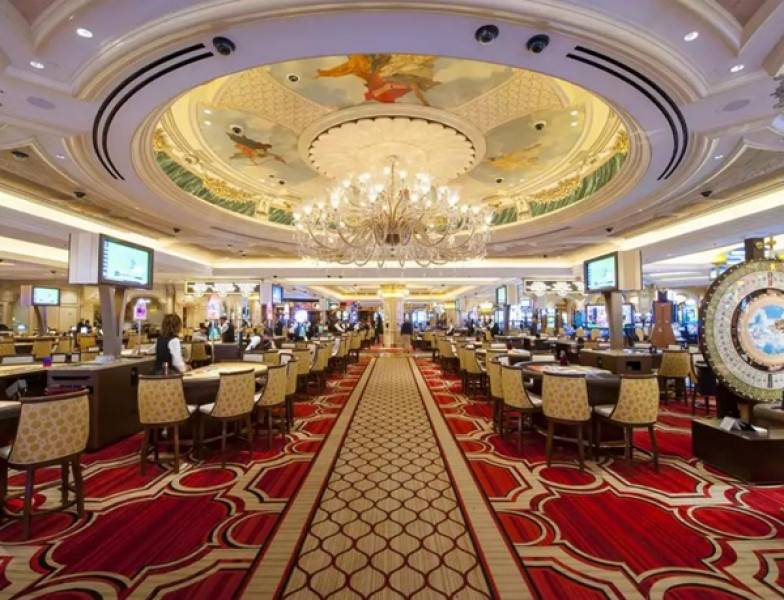 |
Image: The Venetian Hotel & Casino, Las Vegas |
|
2003: Thieves break into a vault in Belgium and steal precious jewels valued at €100 million ($AU163 million). The crime is linked to the Pink Panthers due to the similar modus operandi the gang is known for. The same year, two gang members pull off the then-largest diamond heist in British history at New Bond Street’s Graff ‘Jewellery Salon’, stealing jewellery valued at £23 million ($AU42.74 million). |
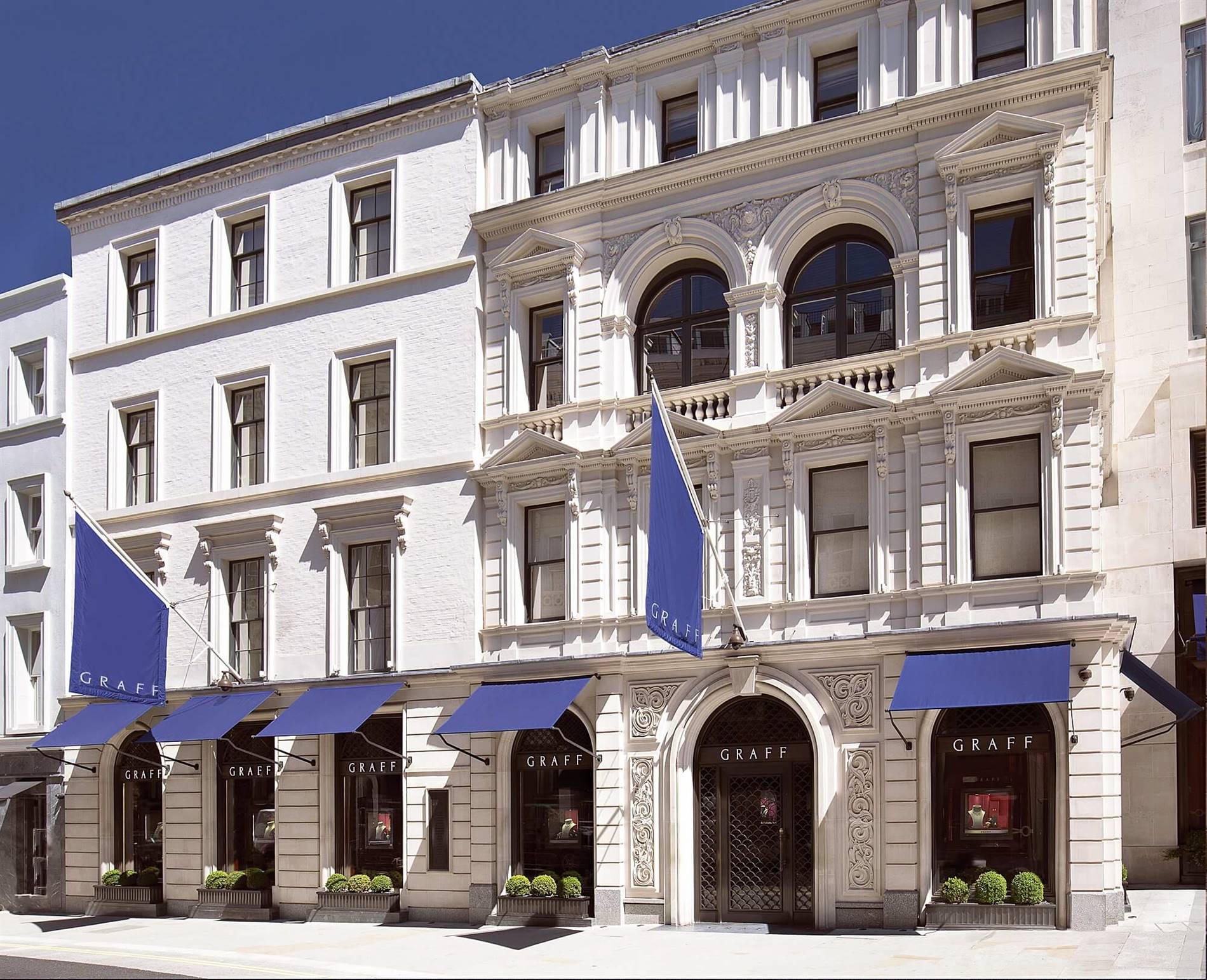 |
Image: Graff London, New Bond Street Boutique |
|
2004: The Pink Panthers carry out the most expensive jewel heist in Japanese history, targeting Tokyo’s Le Supre Diamant Couture De Maki boutique and stealing $AU37.2 million in jewellery, including the Comtesse de Vendôme necklace. They also target jewellers in the city’s Ginza district in two daring robberies, stealing jewellery valued at $AU3.81 million. |
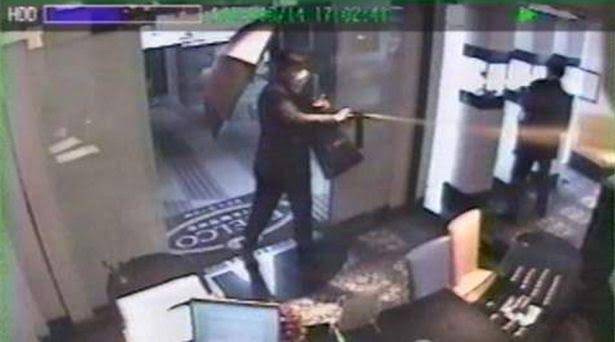 |
Image: Tokyo’s Le Supre-Diamant Couture de Maki jewellery boutique Heist
Source: Beldiamond |
|
2005: Pink Panther members blend in with wealthy holidaymakers in St Tropez by disguising themselves with wigs and Hawaiian shirts. After donning masks to avoid recognition, they storm a jewellery store and steal jewellery and watches before escaping via a highpowered speedboat waiting nearby. The same year, in Amsterdam, an armed gang of seven men – dressed as airport workers – transfer jewellery worth €75 million ($AU122 million) to a waiting plane at Schiphol Airport. It takes authorities 12 years to make an arrest. |
 |
Image: Schiphol Airport, Amsterdam
Source: BBC News |
|
2008: Four Pink Panthers dressed as women steal jewellery from the Harry Winston boutique in Paris, a year after robbing it at gunpoint. The loss from both events is valued at £76 million ($AU141.4 million). They also target a gallery in Zürich, Switzerland, pulling off the largest art robbery in European history by hauling off a Monet, a Van Gogh, a Cezanne, and a Degas with a combined value of more than $AU200 million. |
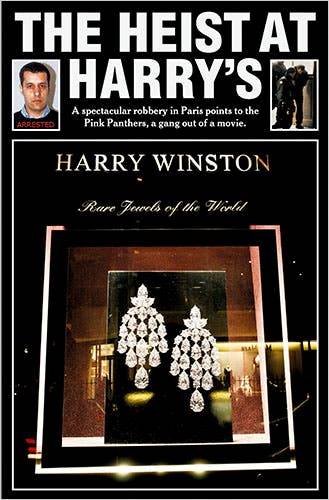 |
Image: Dusko Poznan, left inset, and Goran Drazic, right, were arrested
before the Dec. 4 robbery but are believed to be members of the Pink Panthers.
Source: The New York Times |
|
2009: The Pink Panthers break their previous British record, stealing 43 items of jewellery worth a whopping £40 million ($AU74.4 million) from Graff New Bond Street. |
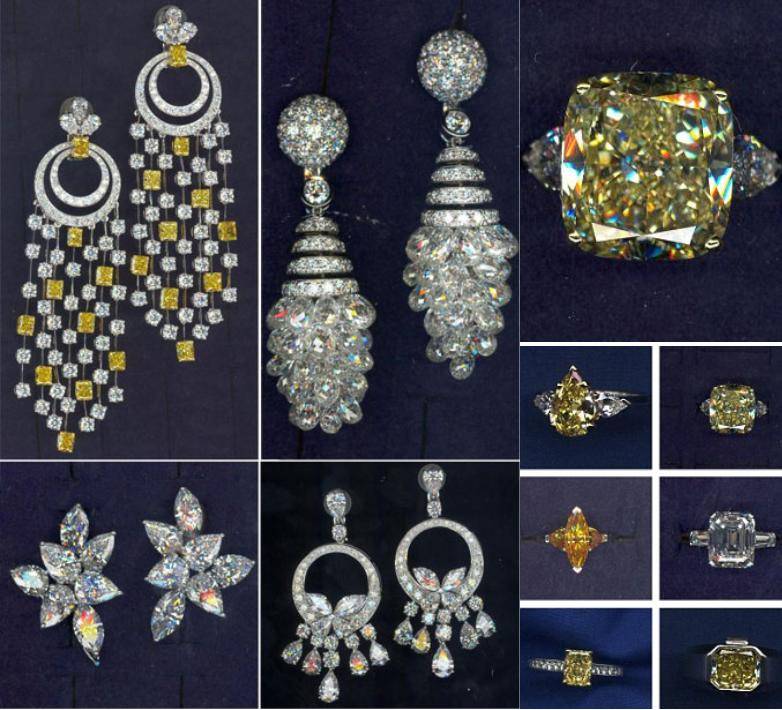 |
Image: The Stolen Gems from Graff
As of today, only one item of the 43 pieces stolen has been recovered. |
|
2018: Gang members steal $AU3.2 million of jewellery owned by a member of the Qatari royal family on the final day of Christie’s ‘Treasures of the Mughals and the Maharajahs’ exhibition at the Doge’s Palace in Venice, Italy. Later in the year, they steal treasures of the Swedish monarchy from a cathedral and a priceless tiara from a British manor house. |
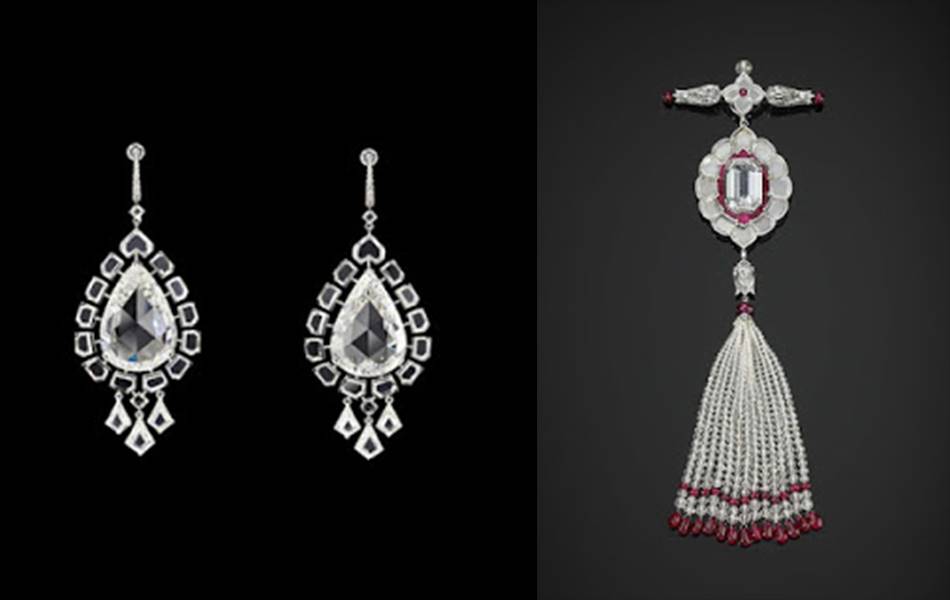 |
Image: Stolen pieces from Doge's Palace
(Left) 30.2-carat diamond earrings in a platinum,
(Right) grade D diamond and ruby pendant brooch |
|
WATCH HEIST
The Daring Heists of The Elusive Pink Panthers
By Buzzfeed Unsolved Network | Length 26:00